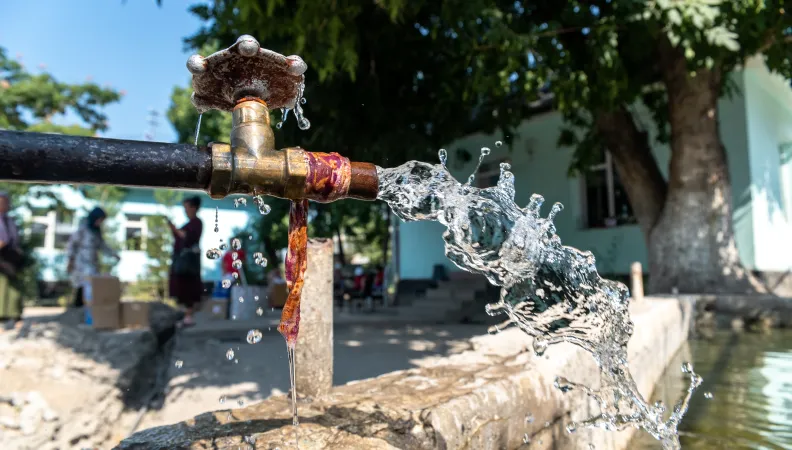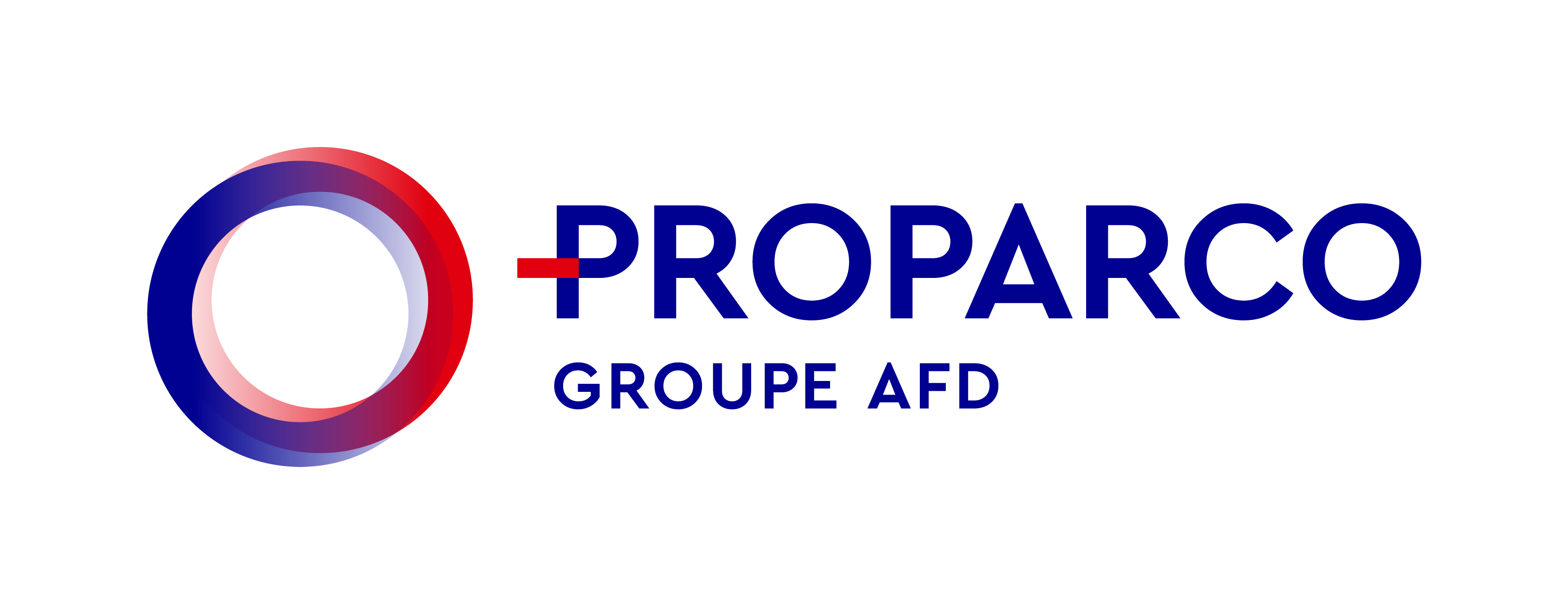Share the page
Non-Revenue Water is water wasted - is resource wasted
Published on

Private Sector & Development #42 - Access to water and sanitation: the private sector at the source
This magazine is dedicated to the role of private sector in the access to water and sanitation. A major issue at a time when more than 2.2 billion people worldwide still do not have access to safe drinking water in their homes and 3.5 billion people lack adequate sanitation.
About a third of the world’s drinking water supplied to water utilities is lost before it reaches any users. This loss, referred to as Non-Revenue Water (NRW), is the most crucial metric in the management of water utilities. It represents the volume of water that is produced and enters the distribution system but does not generate revenue because it is either lost or unaccounted for before it reaches the end consumer.
The global volume of non-revenue water is estimated to be 346 million cubic meters per day or 126 billion cubic meters per year. Conservatively, the total global cost/value of water lost amounts to USD 50 billion per year. The main components of non-revenue water, are physical and commercial, as elaborated below. Physical Losses: These include leaks, pipe bursts, and overflows from storage tanks. Physical losses are often due to aging infrastructure, poor maintenance, and inadequate pressure management. They represent a direct waste of water resources and often require significant investment to address. Commercial Losses: Also known as apparent losses, these include water theft, unauthorized consumption, and metering inaccuracies. Commercial losses are a major challenge in many developing countries, where water theft and illegal connections are prevalent. Accurate metering and billing are essential to minimizing these losses.
WHY PRIORITIZE REDUCING WATER LOSSES?
NRW has significant economic implications for water utilities. That the lost water could otherwise be sold means a direct loss of revenue. In many developing and developed countries, high levels of water loss can undermine the financial viability of water utilities, limiting their ability to invest in necessary infrastructure improvements and expansions. This creates a vicious circle where inadequate infrastructure leads to higher levels of loss, further limiting revenue and investment capacity. According to a recent S&P Global report: “NRW can influence the credit quality of public water utilities rated by S&P Global ratings” since it is a reflection of the overall operational health. Hence NRW can also impact the cost of debt for utilities which adversely affects their ability to raise capital necessary for capital improvements. Moreover, it has been documented time and again that the cheapest way to increase water capacity for any utility is to reduce losses and prevent or delay the need to add additional water sources, which come with significant financial and environmental costs.
In the international context, many developing countries have high levels of lost water, preventing the safe and reliable delivery of water to these populations. Reducing this helps to maximize the available water supply, delaying the need for new water sources and reducing the environmental impact of water extraction and treatment. Saving lost water would equate to supplying water to almost an additional billion people throughout the world. Furthermore, NRW has broader environmental and social impacts. Water losses contribute to unnecessary energy consumption and greenhouse gas emissions associated with water treatment and pumping. Water utilities are amongst the heaviest consumers of energy in any country, due to the need to treat and pump water; this is even more apparent in places that rely heavily on desalination as their main water source. According to S&P Global report, this amounts to11.9 billion kg of co2 per annum. By not cutting water losses, water utilities face the dual issues of water supply and a severe impact on global warming. Additionally, ensuring a reliable and efficient water supply is essential for public health and well-being. Communities with high levels of NRW often face frequent water outages and reduced water quality, which can lead to health issues and a lower quality of life.
MITIGATING NRW – COMPLEXITIES AND CHALLENGES
On paper, reducing NRW is a straightforward task that any water utility should be able to tackle. Unfortunately though, the reality is more complex and challenging. The main challenges utilities face are:
- Lack of organizational courage to admit the problem. Many water utilities do not want to face the reality of being so inefficient: admitting you are losing more than 50% of the water you produce is a psychological, professional, and political challenge.
- Lack of experience in designing and implementing these types of programs. Unfortunately, only a handful of large-scale projects to reduce NRW have ever been commissioned: many utilities and regulators just lack the necessary experience.
- Misconceptions and short-term outlook. Many utilities believe that a lack of water can be bridged by producing more water. Naturally, when a water system leaks a sizable portion of its supply, adding more water to the system will not solve the problem, and can often can make it worse. Another false premise is that the only way to overcome NRW is with massive pipe replacement programs.
- Lack of clear direction, goal setting and coherent strategy. Most water utilities deal with NRW by addressing separate tasks and works without sufficient coordination and without making sure the whole organization works together towards the joint goal.
ATTAINING NRW OUTCOMES WITH PERFORMANCE-BASED CONTRACTS
Performance-based contracts (PBCs) are an innovative approach to managing NRW. Under a PBC, a water utility engages a private contractor to reduce NRW, and the contractor’s compensation is directly linked to the performance achieved. This aligns the incentives of the contractor with the utility’s goals, ensuring that the contractor is motivated to achieve substantial and sustainable reductions in NRW. PBCs typically include specific performance targets, such as a specific volume of water saved. The following are the key elements of successful performance-based contracts:
- Clear objectives and targets: PBCs should be structured around clear and measurable objectives. These targets are established based on a thorough assessment of the existing NRW levels and the potential for reduction. The targets may include both short-term milestones and long-term goals to ensure continuous improvement.
- Output-based approach: The most important deliverable is actual savings. As such, a well-designed PBC allows the contractor a very high level of flexibility on the way to achieving targets. Most utilities are used to applying input-based contracts, whereby they buy a specific list of works. This does not allow sufficient flexibility, and tends to increase capex investment instead of using low-cost ways to impact system performance.
- High performance component – the higher the flexibility the contractor has, the higher the risk they should be able to assume. The utility should seek to increase the portion of PB fees vs fixed fees and ensure that no profit can be made by the private contractor without achieving the desired results.
- Emphasize quality as a key component in the bid selection stage. The utility must make sure that only competent contractors that have both the relevant experience and a robust and well-thought-out plan can compete.
MULTIFACETED APPROACH
Non-revenue water is a significant challenge for water utilities worldwide, with far-reaching economic, environmental, and social implications. Addressing NRW requires a comprehensive and multifaceted approach, including leak detection and repair, improved metering, pressure management, community engagement, and the adoption of advanced technologies. Performance-based contracts offer an innovative and effective way to align incentives, share risks, and achieve sustainable reductions in lost water. Successful case studies from around the world, including projects by Miya Water, demonstrate the potential for significant improvements in NRW management. The future of water-loss reduction lies in the integration of advanced technologies, collaborative efforts, supportive policies, capacity building, and a focus on sustainability and climate resilience. By taking these steps, water utilities can ensure the efficient and sustainable use of water resources, improve service delivery, and contribute to the well-being of communities and the environment.
Author(s)
Noam Komy
CEO
Miya Water

